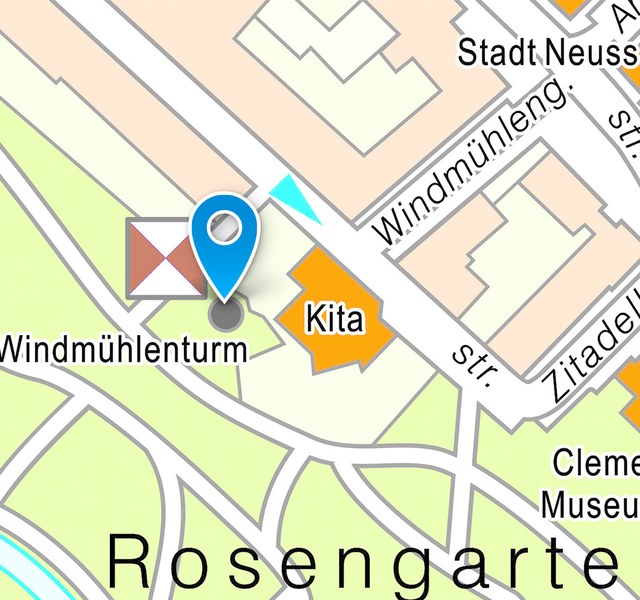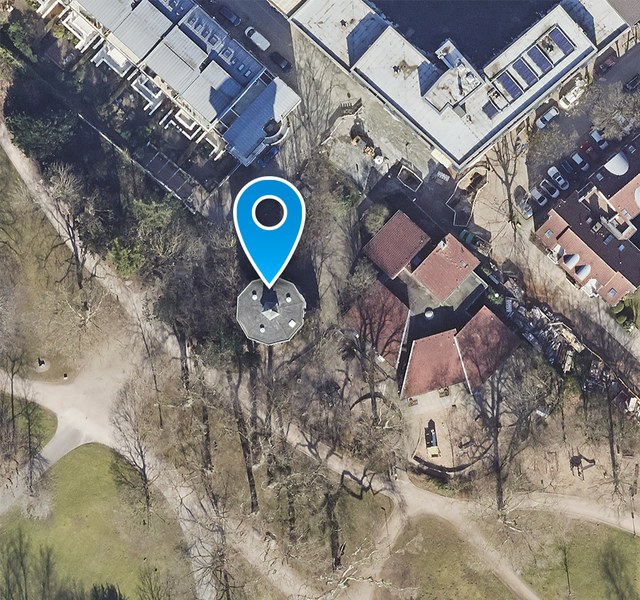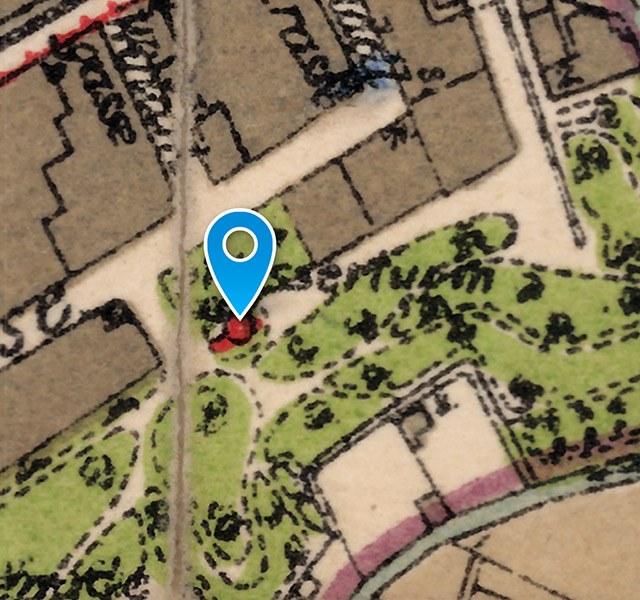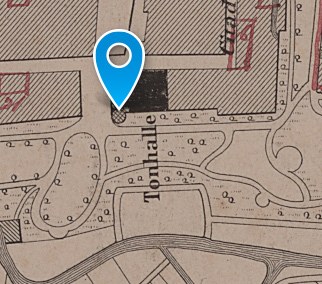 Neuss
NeussHistorisch
Windmühlenturm
Windmühlenturm
© Vereinigung der Heimatfreunde Neuss e.V.
Der Windmühlenturm ist als älteste städtische Mühle und einzige Windmühle in Neuss bereits für das Jahr 1477 dokumentiert. Er überstand den großen Stadtbrand von 1586 ebenso wie die Niederlegung von Teilen der Stadtmauer und die Planierungen für den Bau der Zitadelle im Jahr 1672. Der aus Basalt und Tuff auf einem Sockel aus Trachyt erbaute untere Teil des Windmühlenturms war unmittelbar in die Stadtmauer aus dem 13. Jahrhundert integriert.
Vom Mittelalter bis ins frühe 19. Jahrhundert diente der Turm zudem als städtisches Gefängnis. 1796 saß hier der Räuber Matthias Weber, genannt der „Fetzer“, ein, dem die spektakuläre Flucht aus dem Turm gelang. Zuvor war ihm und seinen Komplizen der Einbruch ins Rathaus und der Raub von Teilen des Stadtschatzes aus dem Archiv gelungen.
Mitte des 19. Jahrhunderts wurde der Mühlenbetrieb eingestellt. Der Turm diente in der Folge als Lagerraum, sein Gewölbe als städtischer Eiskeller. In ihm wurde das aus den umliegenden Gewässern gewonnene Natureis gelagert, das zu Kühlzwecken verkauft wurde.
Im Zusammenhang mit dem Bau der städtischen Wasserleitung 1881 wurde der Windmühlenturm in Backstein aufgestockt und zum Wasserturm umgebaut. Ein Hochbehälter, ein achteckiges, mit Schiefer bedecktes eisernes Wasserreservoir, gewährleistete den nötigen Wasserdruck in den Leitungen.
Quellen und Texte: Stadtarchiv Neuss
Windmill Tower
The Windmill Tower as the oldest and only municipal windmill in Neuss is already documented for 1477. It survived the great fire of 1586 as well as the razing of parts of the city walls and the levelling for the construction of the citadel in 1672. The lower part of the Windmill Tower, built from basalt and tuff on a trachyte plinth, was directly integrated into the 13th century town wall.
From the Middle Ages to the early 19th century, the tower also served as the municipal prison. In 1796, the robber Matthias Weber, known as the “Fetzer”, was incarcerated here, but managed to stage a spectacular escape. Earlier, he and his accomplices had managed to break into Neuss Town Hall and steal many of the municipal treasures from the archives.
The mill operation ended in the mid-19th century. The tower then served as a storage space, its vaults as a municipal ice cellar to store the natural ice harvested from the surrounding watercourses and then sold for cooling purposes.
In conjunction with the construction of the municipal water supply system in 1881, the Windmill Tower was converted to a water tower with an additional brick-built storey added. An elevated tank, an octagonal iron reservoir with a slate roof, ensured sufficient water pressure in the pipes.
Sources and texts: Neuss municipal archives
Tour du Moulin
La tour du moulin est le plus ancien moulin municipal documenté et le seul moulin à vent de Neuss dès 1477.
Elle a résisté au grand incendie de 1586, ainsi qu’à la démolition d’une partie des remparts et aux nivellements pour la construction de la citadelle en 1672. La partie inférieure de la tour du Moulin, construite en basalte et en tuf sur une base en trachyte, était directement intégrée dans les remparts du XIIIe siècle.
Du Moyen Âge au début du XIXe siècle, la tour a également servi de prison municipale. En 1796, le brigand Matthias Weber, surnommé l’Arracheur, y a été incarcéré et a réussi à s’évader de la tour de façon spectaculaire. Auparavant, lui et ses complices avaient réussi à s’introduire dans l’hôtel de ville et à dérober une partie du trésor de la ville dans les archives.
Les activités du moulin ont cessé au milieu du XIXe siècle. Par la suite, la tour a servi d’entrepôt et sa voûte de cave à glace municipale. On y stockait la glace naturelle extraite des eaux environnantes, qui était vendue à des fins de réfrigération.
Dans le cadre de la construction du réseau d’eau municipal en 1881, la tour du Moulin a été surélevée avec des briques et transformée en château d’eau. Un réservoir d’eau surélevé, octogonal en fer recouvert d’ardoise, assurait la pression d’eau nécessaire dans les canalisations.
Sources et texte : archives de la ville de Neuss
Bilder

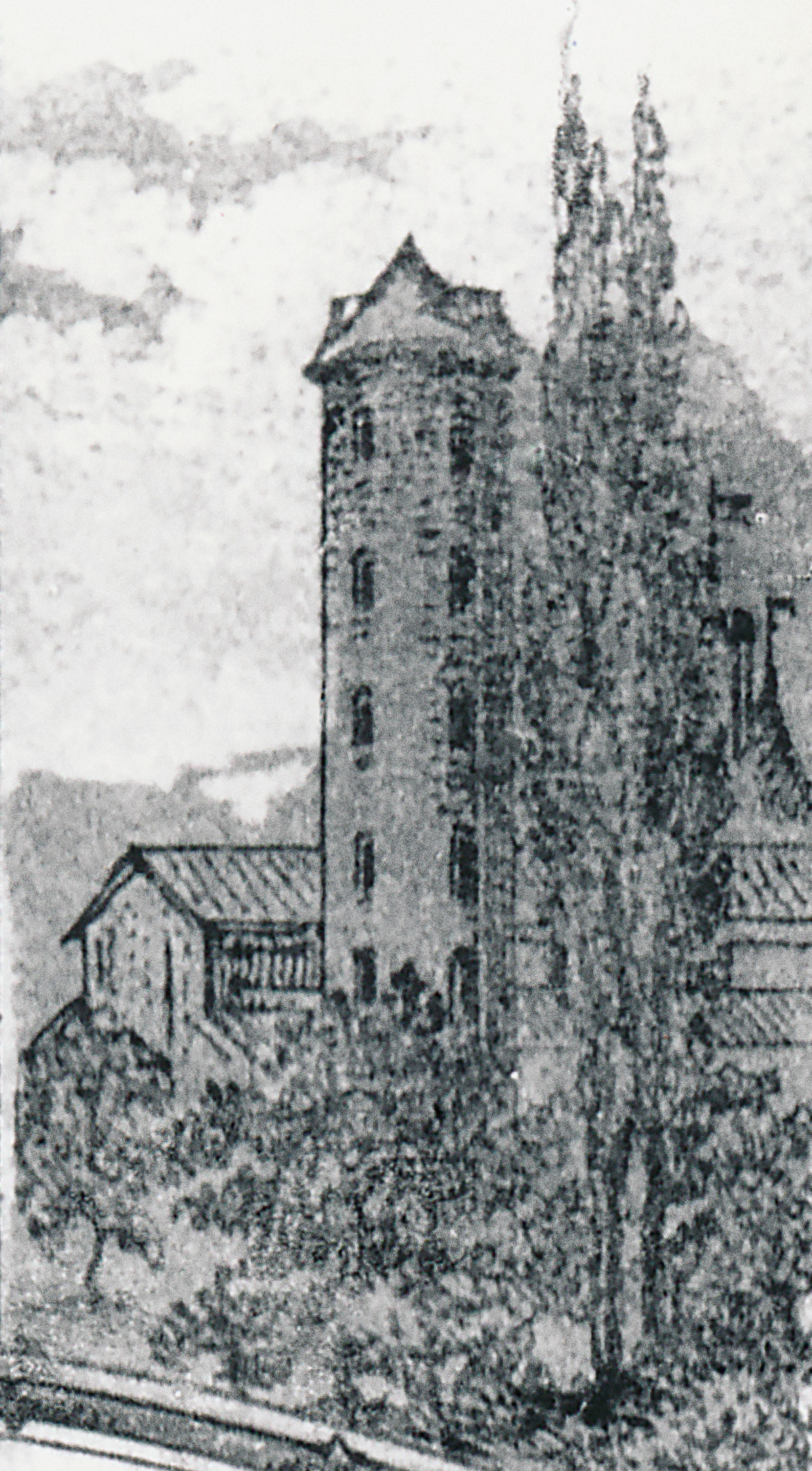
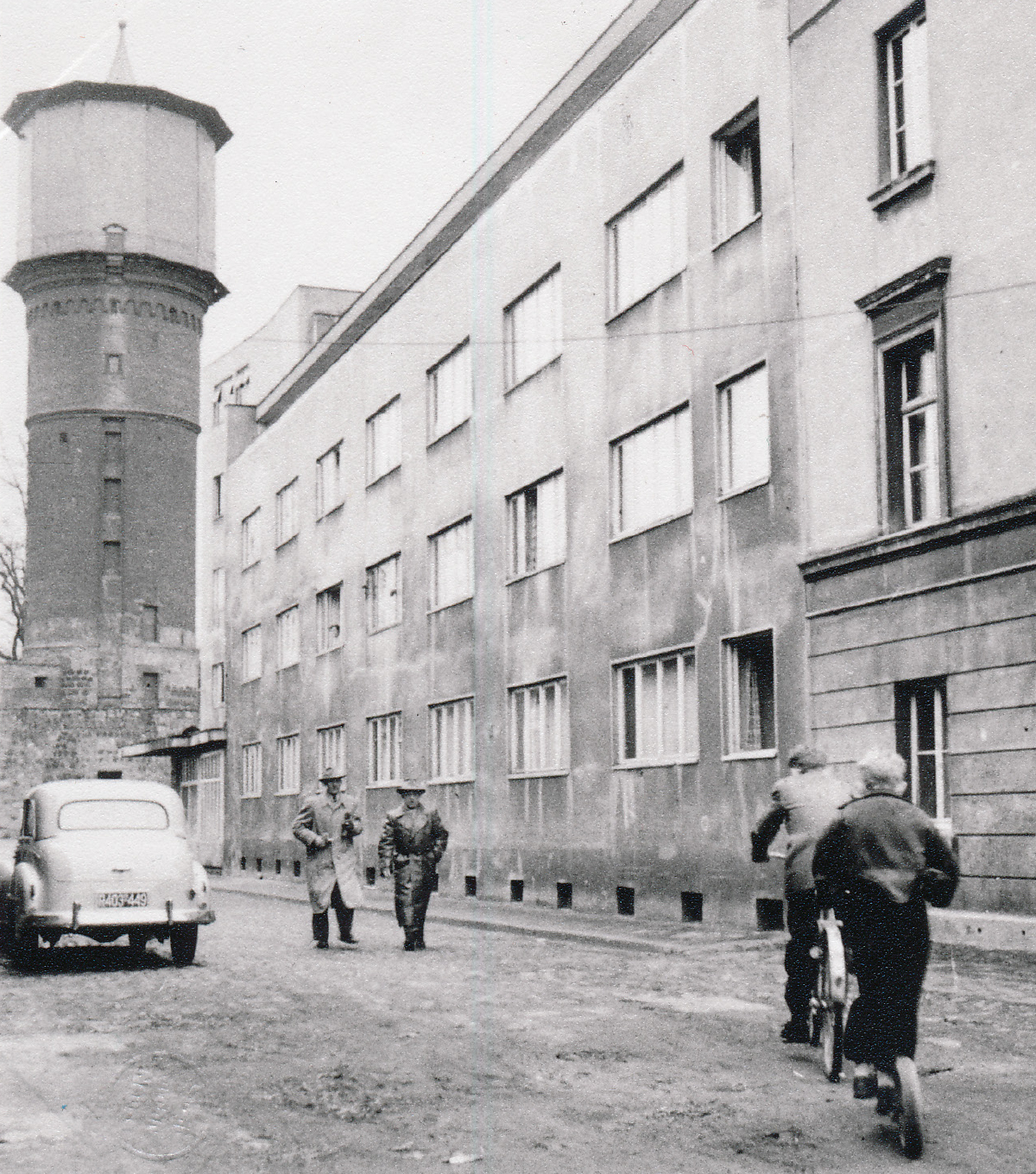
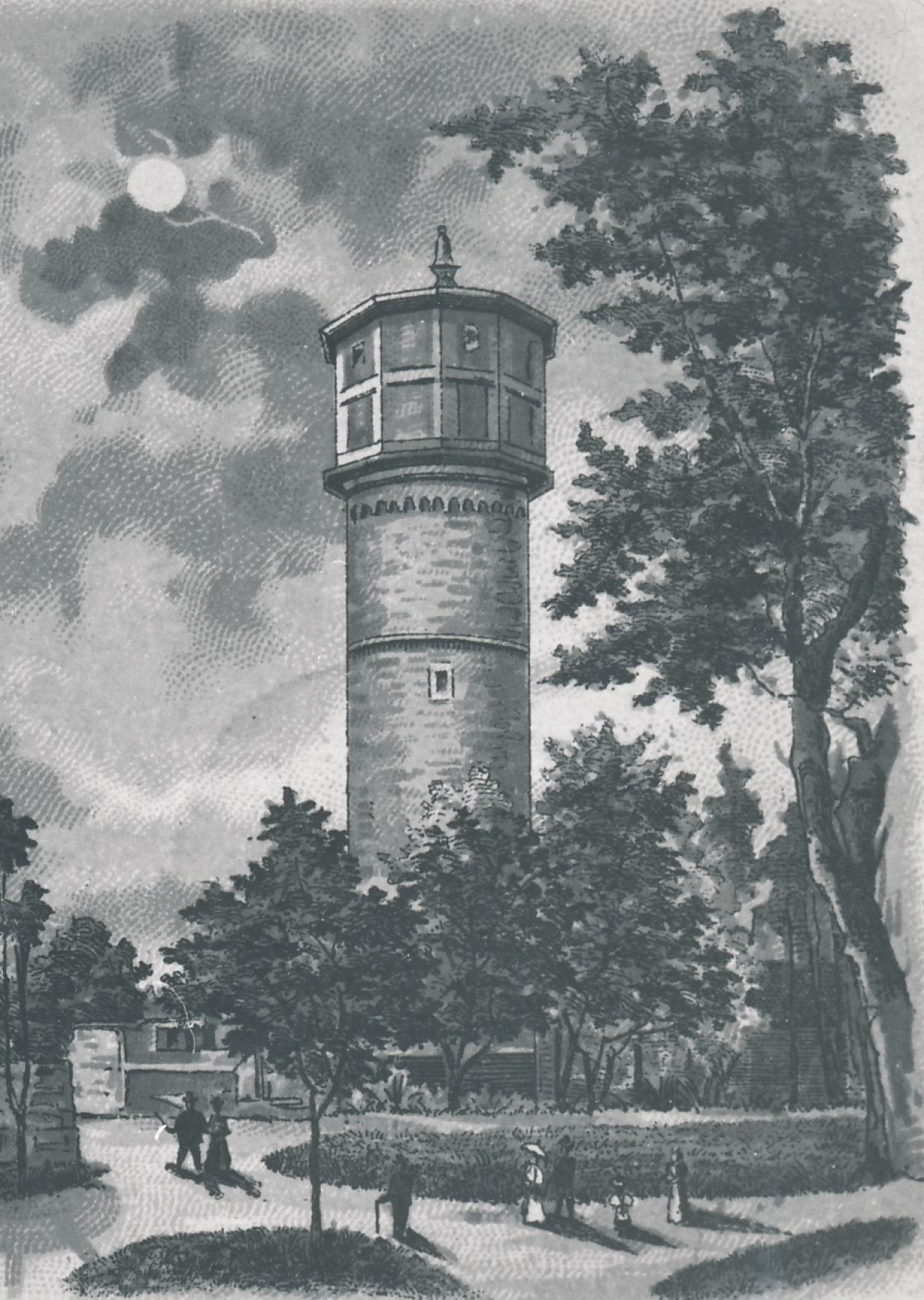
Lagepläne
Downloads
Infotafel „Windmühlenturm“
Info Panel “Windmill Tower”
Plaquette « Tour du Moulin »
Windmühlenturm
Audio Guide (deutsch)
De Winkmühletoom
Audio Guide (Nüsser Platt), © Vereinigung der Heimatfreunde Neuss e.V., Vorleser: W. Schepping
Windmill Tower
Audio Guide (english)
Tour du Moulin
Audio Guide (français)

